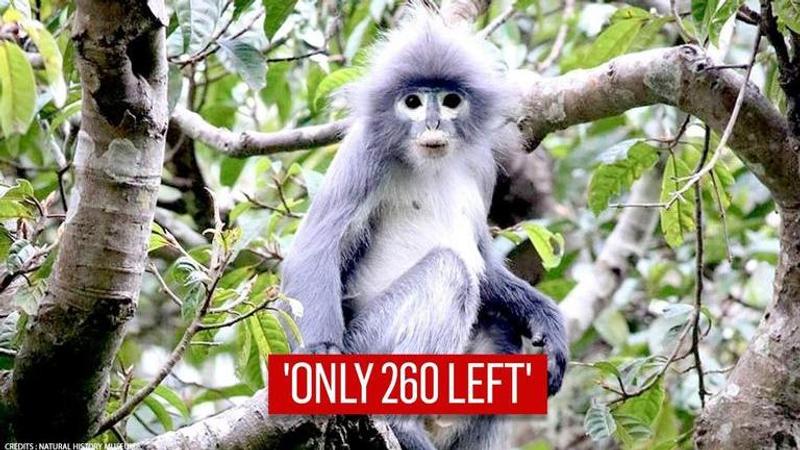Published 16:07 IST, November 11th 2020
Scientists discover new endangered primate species 'Popa Langur' in Myanmar; only 260 left
A 100-year-old specimen that was preserved at London Natural History Museum from the early 20th century was essential for endangered primate species research.

Scientists have discovered an endangered species of monkey called the ‘Popa langur’ named after its place of origin Mount Popa in remote forests of Myanmar. The almost extinct leaf-eating monkeys known for its distinctive spectacle-like eye patches and greyish-colored fur are found in Southeast Asia. While the species disappeared largely due to extensive habitat loss and hunting, scientists suspected that a few species might still be present in Myanmar. On November 10, the rare study detailing the find of the Pope Langur was documented in Zoological Research Journal, with experts claiming that only 200 to 250 were of the rare species was left in the wild.
According to the researcher and lead author of the study at Flora & Fauna International (FFI) in Rangoon, Frank Momberg, the described Popa langur is “already facing extinction” and the herbivore species has been classified as "critically endangered” by the scientists. The rare type of monkey with a long tail rings around its eyes, and a crest of fur on top of its head was a completely new species with genetic variations in its features such as tail size, fur colour, and cranium form over millions of years. In the study, the researchers at Fauna and Flora International (FFI) and the German Primate Center (GMC) carried out surveys of these langurs by gathering the samples and DNA of all different ‘Trachypithecus’ species, the scientific name for the cousin of Pope Langurs. Scientists collected the specimens in different museums, surveys, and samples in order to verify and investigate the existence of the new species.
A 100-year-old specimen that was preserved in the London Natural History Museum from the early 20th century was an essential component of the research. British zoologist Guy C. Shortridge collected hundreds of specimens including 1913 Trachypithecus specimen years ago which the researchers examined and compared with the newly accumulated information and samples.
“Monkeys are one of the most iconic groups of mammals, and these specimens have been in the collections for over a hundred years,” Roberto Portela Miguez, a senior curator on the Natural History Museum said. “But we didn’t have the tools or the expertise to do this work before,” he added.
Species still legally protected
The study demonstrates that natural history collections are a valuable and key resource for genetic research and in the context of the current biodiversity crisis, they are clearly even more relevant and important today than ever before,” mentioned Miguez in the research. The species is listed under the International Union for Conservation of Nature (IUCN) and the Convention on International Trade in Endangered Species (CITES) and were on the Brink of extinction due to agricultural encroachment, environmental degradation, and different disturbances to the land like free cattle grazing, according to the study. The study found that throughout central Myanmar many species were still legally protected, despite hunting and deforestation for the timber industry and fuelwood occurring.
[There are thought to be only around 200-250 individual Popa langurs left, meaning they are already considered critically endangered ©Thaung Win]
[There are a few distinctive parts of the Popa langur's skull, including larger molars and an more elongated skull © Kevin Webb/Trustees of the Natural History Museum, London]
[The specimens of the newly described Popa langur held at the Museum were first collected in 1913 © Kevin Webb/Trustees of the Natural History Museum, London]
[Mount Popa is home to Myanmar's most venerated spirits known as 'Nats', and now also protects the largest population of Popa langurs © Alexis]
Updated 16:06 IST, November 11th 2020







